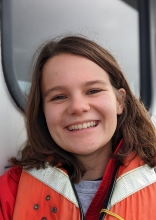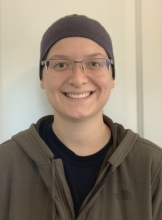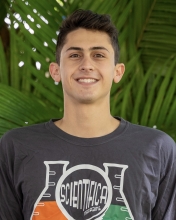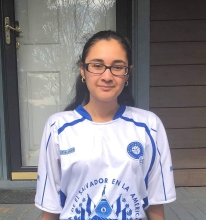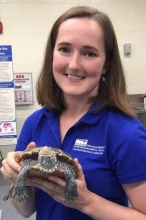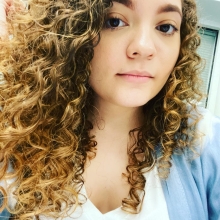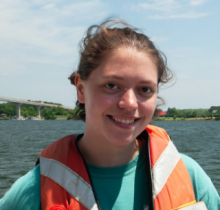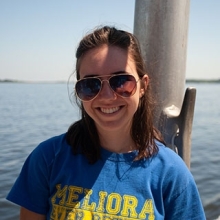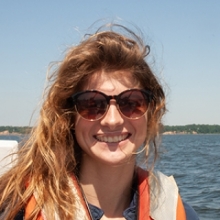Eight students will be presenting the summer work at the Ocean Sciences Meeting in March 2022!
Sydney Riemer, Johns Hopkins University
Class Year:
2017Mentor:
Michael Gonsior, Ph.D.Project Title:
Structure Elucidation of Marine Picocyanobacteria-Derived Fluorescent Dissolved Organic Matter
Abstract:
Chromophoric dissolved organic matter (CDOM) is an important component of the marine dissolved organic matter pool. It absorbs solar radiation and thus effects light attenuation in the ocean, as well as the biogeochemical cycling of elements such as carbon and nitrogen. The marine picocyanobacteria Synechococcus and Prochlorococcus have recently been found to be a contributor to the deep-sea fluorescent dissolved organic matter (FDOM) pool. However, little is known about the composition or structure of these picocyanobacteria-derived fluorophores. Phycocyanobilin (PCB) is a water-soluble tetrapyrrole that functions as the chromophore of the light-harvesting structures in the photosynthetic apparatus of Synechococcus and is a plausible precursor to picocyanobacteria-derived FDOM. In this study we make preliminary measurements and observations of both a standard PCB solution and real Synechococcus culture DOM that will help with structure elucidation. We used photo-degradation experiments to produce the PCB-derived fluorescent photo-products. We implemented excitation-emission matrix spectroscopy to measure fluorescence, high-performance liquid chromatography to separate the fluorophores, and high-resolution mass spectrometry to begin to obtain compositional and structural information about the fluorophores. We found that both the PCB standard and the Syn. culture show similar changes in fluorescence and mass after photo-degradation, confirming that PCB may be a precursor to deep-sea picocyanobacteria-derived FDOM.


